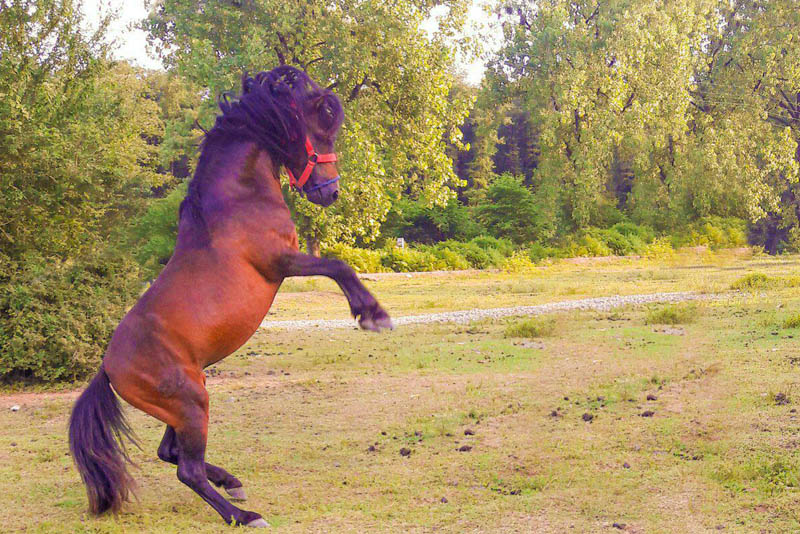Humans and horses weaved together wonderful stories of adventure and generosity. As a part of human history and civilization, Arabian horses ignite imagination throughout the world. Populations of this breed exist in many countries.
Here I explored different populations of Arabians representing Middle Eastern and Western populations. The main two aims of this study were to provide the genetic diversity description of Arabians from different origins and to examine the traditional classification system of the breed. A third aim was to tackle the distribution pattern of the genetic variability within the genome to show whether there are differences in relative variability of different types of markers.
First, I analyzed the genetic structure of 537Arabian horses from seven populations by using microsatellites. The results consistently showed higher levels of diversity within the Middle Eastern populations compared to the Western populations. All American-Arabians showed differentiation from Middle Eastern populations.
Second, I sequenced the whole mtDNA D-loop of 251 Arabian horses. The whole D-loop sequence was more informative than using just the HVR1. Native populations from the Middle East, such as Syrian, represented a hot spot of genetic diversity. Most importantly, there was no evidence that the Arabian horse breed has clear subdivisions depending on the traditional maternal based strain classification system.
Third, I tested the heterozygosity distribution pattern along the genome of 22 Peruvian Paso horses using 232 microsatellites and Single Nucleotide Polymorphisms (SNPs). The pattern of genetic diversity was completely different between these two markers where no correlation was found. Runs of homozygosity test of SNPs and associated microsatellites noticeably showed that all of associated microsatellites loci were homozygous in the matched case.
The findings of this study will help in understanding the evolutionary history and developing breeding and conservation programs of horses. This study provided databases including parentage testing system and maternal lineages that will help to recover the Syrian Arabian population after the armed conflict started in Syria in 2011. The results here can be applied not only to horses, but also to other animal species with similar criteria.
A Dissertation by
ANAS MAHMOUD KHANSHOUR
Submitted to the Office of Graduate Studies of Texas A&M University in partial fulfillment of the requirements for the degree of DOCTOR OF PHILOSOPHY
Chair of Committee, Ernest Gus Cothran
Co-Chair of Committee, Terje Raudsepp
Committee Members, Jane Welsh & James Derr
Head of Department, Evelyn Tiffany-Castiglioni
August 2013
Major Subject: Biomedical Sciences
Copyright 2013 Anas Khanshour

